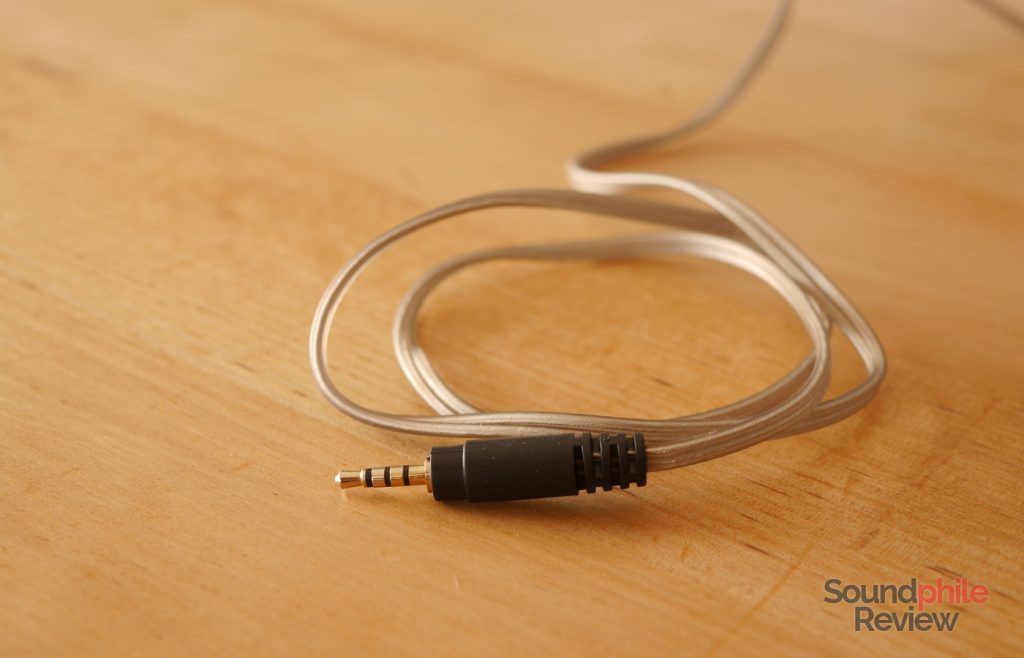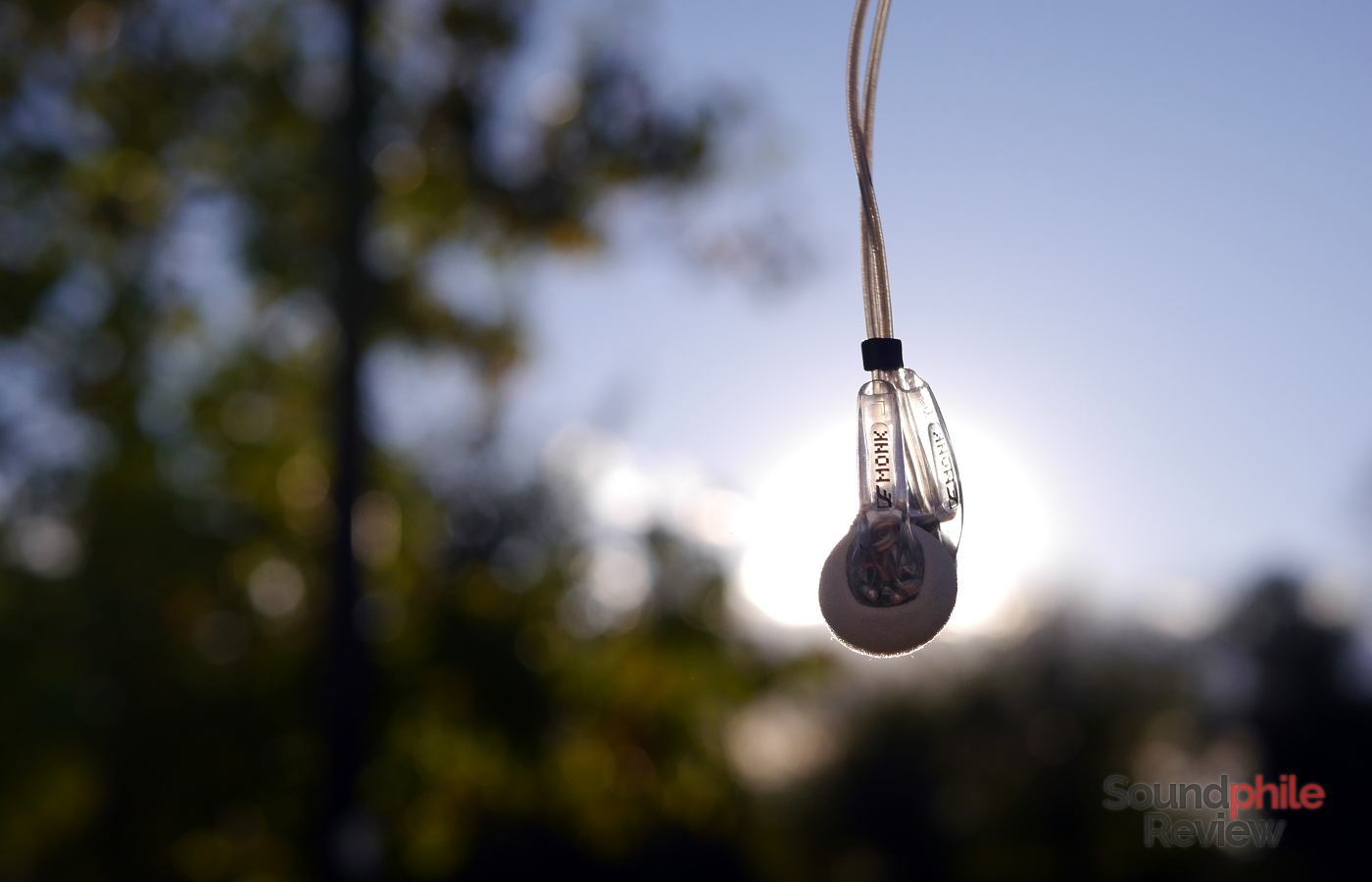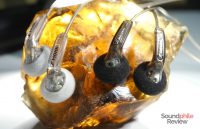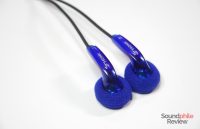How can you make an acclaimed, best-selling earbud even better? How do you make it new without designing it from the ground up? Venture Electronics’ Monk Plus is already one of the most famous earbuds on the market and it has won the favour of public and critic alike. The company has manufactured a small batch of earbuds with clear housings and a silver-plated copper (SPC) cable, aptly called Monk Plus SPC, which introduce a noticeable difference in terms of appearance and – unexpectedly – of sound, too.
While they are sold out as this review is being written, Venture Electronics may manufacture new runs or use the same SPC cable on other projects (i.e. the new Monk IE).
This is not a “full” review, as most elements are common to the VE Monk Plus review I published a few months ago (and which I invite you to read). I will focus on the differences instead.
Disclaimer: I bought the Monk Plus SPC with my own money. You can check Venture Electronics’ website for additional information on the Monk Plus earbuds.
TL;DR: recap
| Pros |
Cons |
| Detailed, balanced, lively sound
Huge soundstage Affordable |
Cable is a bit stiff |
Rating: 8.8/10
Design & Comfort

The Monk Plus earbuds have been a treat from Lee to collectors and fans alike since their launch, with multiple versions with different aesthetics introduced (and sold out) since then. The Monk Plus SPC is no exception, and it introduced the clear housings to the Monk Plus line. There have been semi-transparent Monks before, but this is the first time the housing is completely clear.
The real news is the SPC cable, which is a bit stiffer than the previous one. In terms of appearance it is much more premium, with the see-through plastic covering the silvery cable. It makes it clear this is not your typical Monk Plus.
Speaking of stiffness, the only complaint I have is that the cable tends to follow the shape it was given when it was packaged (with a few bends), so it won’t stay still in the position of your choice, but it will always return to the shape it “wants”. This is only really an annoyance when listening on a desktop setup: in my cade it always got on the mouse. Since this is the only “real” complaint I have, I think this should speak volumes on the quality of the cable.

The unit I bought has a 2.5 mm jack connector which can be used with DAPs with balanced output (i.e. FiiO X5 3rd gen). There was also an adapter in the box, so I can use it with non-balanced, 3.5 mm jack outputs.
Comfort has not changed in comparison to the Monk Plus I already reviewed: they are still great (in my case, I have to add “once I added foams”. Sensitive skin is terrible!).
Sound
As usual, I tested the Monk Plus SPC with a variety of sources: I used the Topping DX7, the Little Dot MKIII SE, the Aune M1s and the FiiO X3 3rd gen. Most of my collection is made up of FLAC files (most being 16 bit, 44.1 kHz) with few MP3s (320 kbps) still laying around. They had 100 hours of burn-in when I started listening to them.
Before going on with the analysis, I would like to make it clear that I am not a believer in the ability of cables to change sound: cables only carry an electrical signal from point A to point B and if they change the signal, then there’s something wrong with them. If you take the highway with a red car, you don’t want to have a blue car by the time you take the exit. That’s the same for cables. Having that said, though, I have to admit that I do hear differences in sound.
I talked with Mr. Lee about this fact, and he told me he expected the Monk Plus SPC to sound the same – as I did before trying them out. In my experience, there is a difference in sound, and the same applies to the Asura 2.0s, which is the equivalent of the Monk Plus SPC applied to the Asura 2.0. Could it be that these differences are due to the naturally-occurring variation between samples? Of course, but that would not explain such a difference.
Bass has more presence and depth, and it’s also more textured. There is more, but not in a bad way: it’s balanced and it’s in harmony with the rest. Sound is warmer as a whole, which is great for acoustic tracks (listening to Ulver’s Kveldssanger is fantastic) and genres with lots of vocals.
This brings us to mids, which are indeed warmer than on standard Monk Plus. Midrange is more in the spotlight than before, therefore vocals take centre stage even more than before. This emphasis results in a mellow sound which envelopes you – it makes me think of a warm blanket in the winter, or whiskey. The Monk Plus in general focus on mids, as they are the spectrum where the most important information in terms of melody and harmony reside – think voice, guitar, piano and most instruments being in the midrange. They convey the most information and the choice to focus on them is a great choice, especially for those genres where mids are the centre around which everything else revolves.
These are definitely not earbuds for those who love lots of highs, as treble is definitely not front and centre. It’s detailed, rich and audible, but it sometimes slips behind the rest. Extension could be better, but it’s perfectly in tune with the general warm tone of the earbuds.
Soundstage is comparably wide, but it’s more layered, with vocals in Smooth by Santana or Mark Knopfler’s guitar on Romeo and Juliet by Dire Straits which sound more intimate than on standard Monk Plus and the other instruments having a better distribution in terms of layering. Every instrument seems to have a better-defined position. Imaging is more precise as a consequence.
All in all, I feel like the Monk Plus SPC are not an upgrade over the classic Monk Plus. They’re different earbuds altogether. The change in tonality is so apparent that I can’t think of the two versions as a single model. The Monk Plus SPC may be even more desirable for people who would like to start their journey in the audiophile world, simply because they offer a warmer sound that is more easily likable.
This also leads to a side note regarding the importance of experiments. The Monk Plus SPC are an experiment by their very nature, since they are produced in a very limited quantity. Experimenting does not always lead to better results, but it is vital for advancing and is at the core of our human experience. I applaud Venture Electronics’ courage in bringing experimental products to the market, as it makes it possible to try how different implementations sound.
What’s more, the affordable price makes it possible to listen to different variations – and I deem this fundamental to form one’s opinion and to grow as a music listener and as a person. There’s no way to feed one’s thought and to form opinions other than this.
The very essence at the core of the Monk Plus SPC (and the Mink Plus, too) is this. And the fact they are earbuds also plays a role in this: they are different from IEMs and headphones, and trying out a few different ones is key to have a better understanding of the different kinds of headphones and earphones on the market.
Final Thoughts
When I bought the Monk Plus SPC I did not expect them to sound all that different from the traditional Monk Plus. In fact I bought them mainly because of the balanced connector and the attractive aesthetics. Hearing how different they are from the Monk Plus made me scratch my head, since I am convinced that good cables should have no effect on sound.
I always looked with scepticism to the audiophile cable market, with companies charging even thousands of euros/dollars for cables. It always seemed to me that it is snake oil, since there is no scientific evidence of any improvement in sound. The famous coat hanger wire experiment tells us that most part of the obsession over cables is totally nonsensical and non-scientific.
There’s no need to spend hundreds or even thousands of dollars into cables, though it may be worth trying different cables if they’re available for a few dollars. In this case, the SPC version costs $30 (vs $5 for the standard version), which is indeed a steep increase, but without making the earbuds unaffordable. Venture Electronics builds cables with various connectors and given how different the Monk Plus SPC sound, I will be testing a few different cables from them for my in-ears with removable cable.
My preconceptions are now shaken and I will be looking into the matter. An investigation must be done, as my curiosity needs satisfaction. The unexpected is always a source of change, which in turn brings better understanding. Thank you, mister Lee!









Unless you’re using a really bad cable, I don’t believe (and I don’t think any logical person should) different cable materials can make a earbuds driver sound different. Spc may sound better, but it ain’t the cable that makes it better. You could make a comparison chart between the frequency response curve of the monk+ standard and spc version, would be more convincing than all those praising words.
PS: Not a monk hater, in fact I hold my monk+ very dearly, just tired of people fueling this chinese marketing bullshit of changing cable makes sound signature better.
Hi! Thanks for your comment!
I am a strong believer in the fact that cables should not make a driver sound different. That’s just common sense, in my opinion. I do not believe investing in a $200 cable would make my headphones or speakers sound better or different in general. If I have any bias, then it’s a bias *against* the whole “cables-sound-different” thing.
However, I really do hear differences, and they’re not small either. I will try to get some measuring equipment to better understand whether there is indeed any difference.
By the way: the “marketing bullshit” – as you called it – is not a Chinese exclusive, as I see many American and European companies backing it, too.
Many people have been reporting that the spc version sounds much different (in a good way) than the standard edition, so I don’t object your hearing or judgement. Just thought to state it that it cannot be the cable that is responsible for all the change, probably VE tweaked the driver tuning a bit, being as shady as they are. Still some measurement tools can make it clearer what is working behind the sound signature being different.
About the marketing scheme, I too see it using by others except Chinese (too heavily by some Indonesian companies, and some American companies as well), but the term Chinese was used because it seems like this concept of upgraded cable is just a major agenda in every line of chifi IEM-earbud companies these days.
Mh, that’s the first time ever I’ve read someone calling VE shady. My experience with them has been great so far – they’re open and helpful. Would you please drop me an email to elaborate on your point?
I get what you mean now with “Chinese” and I think you are right on that.
Cable material, design, dielectric used, configuration, specific type of braid used, number strands/cores, whether silver or copper (plated or not) or combinations of both, and so on can affect the tightness or looseness of reproduced frequencies -some more so than others- and can affect sound-pitch (cymbals/hi-hats/snare drums) and even factors pertaining to soundstage. 6N (99.9999%) copper, or better, sounds musically better than ordinary copper -bass will be tighter, more tuneful w/faster decay. High quality pure silver cable tend to sound very open and transparent and more dynamic than a non-silver cable, for example.
Kimber Kable’s D-60 coaxial digital cable is legendary for good reasons, it is a really good example of what silver sounds like (a well known transparency champ)
Kimber Kable’s 8TC high-purity copper speaker wire is a longtime industry standard also for good reasons: neutral, soundstaging, dynamics, etc.
WIREWORLD Chroma 7 HDMI Audio/Video Cable deliver the minute details, right down to people’s pores and peach fuzz, and colors ‘naturally’ –it does this noticeably better than my other HDMI cables
Those 3 are my very best cables among others, the difference they make in my Hi-Fi audio-visual system is noticeable, audible.
Man you make me laugh….
Digital signal are not affected by cables at all as there is digital signal transfer and the receiving end has clock corrector for that…if their is a superconducting cable like graphene litz, then the clocker will distort the signal and not correct it…
Resistivity doesn’t effect digital signal
And things you write were bullshit
Cable do effect sound, but it happens when you have a massive drop in impedance 1st.
0.3 ohm vs 0.2ohm will have difference as driver behave less stiffer and more to its intended response.
Microthermal behavior of cable, as the signal flows create some micro heat changing the imoedance, creating swings…
And many factors… Which changes the sound..
But the law of diminishing return comes into play here…
To a certain aspect, the cable will change the sound(mostly distortion graphs) and sometime FR(if original was too bad)
But going extreme prices like effect audio doesn’t make sense as their is a limit of the cable after that, even effect rise is negligible..
No. Of braid effects and not the style of braid as the wire is already braided(cancelling the magnetic waves).
No. Of braid drops resistance as they soldered on the end in parallel configuration.
In the end, it matters on driver and tuning.
Cable effect IEM as they are extremely near our eardrum making us more prone to changes
VE clan used SPC changed sound as most current flow on surface, on the silver and then copper helps in better heat storage..copper do flow current and help the sou d turn warmer.
Effect is minimal but noticeable.
Have just ordered monk spc just because its beautiful clear housing and cable, and i know it cant hope to compete with my current earbud but its beauty and rarity so appealing
About cable, by a few experience, i hear a similar signature brought by the same cable on different earbuds/headphone. I have crow audio raven mk2 which uses vjc cable… A high grade copper cable, and then about 1month ago i ordered aux cable with vjc for my fidelio x2, initially to reduce bass qty from fidelio…then boom, clearly i notice similar feeling like in my raven earbuds. Raven with vjc cable has unique signature on highs , and that signature appear on my fidelio. Its sounds nothing like when i use the original cable. Unfortunately the over sub bass in X2 is still there, only decreased a bit
After spending some hours with monk+ spc i dont hear noticeable differences with regular monk+. And the spc cable doesnt look as good as in the photo too.
Considering quality and accesories it still good deal
You realize they just tuned a monk+ slightly differently, put a spc cable and make you believe is the cable making the difference right? so if i make a diy killing all the treble then i put a gold cable on, you’ll believe gold kills treble?
A year after this review and having a bit more experience (and study hours spent on improving my knowledge on the audio world), I think the difference comes from the shell. It’s transparent, so it’s a different material which could alter the way the earbuds sound.
I have been a Monk Plus user since last year and they are great earbuds, no words about it. They have such an enjoyable sound signature that I use them almost every day.
Recently I came across the SPC versions and other different colored and cabled versions on their website and wondered if they really sound different. Thank you for this article, now I know they sound different because of the materials used in constructing the shell.
Monk Plus is truly great for Jazz and other instrumental type music and scales well with better amplification. I don’t think anyone could get better use of 10$ when it comes to headphones than this.
I’m don’t believe in all this bullshit about cables in the audiophile world. I don’t hear difference most of the time and it can’t be measured….well, there is one case it can make a difference: impedance.
If the cable has a strong impedance, it can affect the the response of the driver, or at least how it is driven by the source. Hence the difference in sound.
It could be the case here.
An ohmmeter could explain this difference.
Or the driver or the case has been retuned, simply….